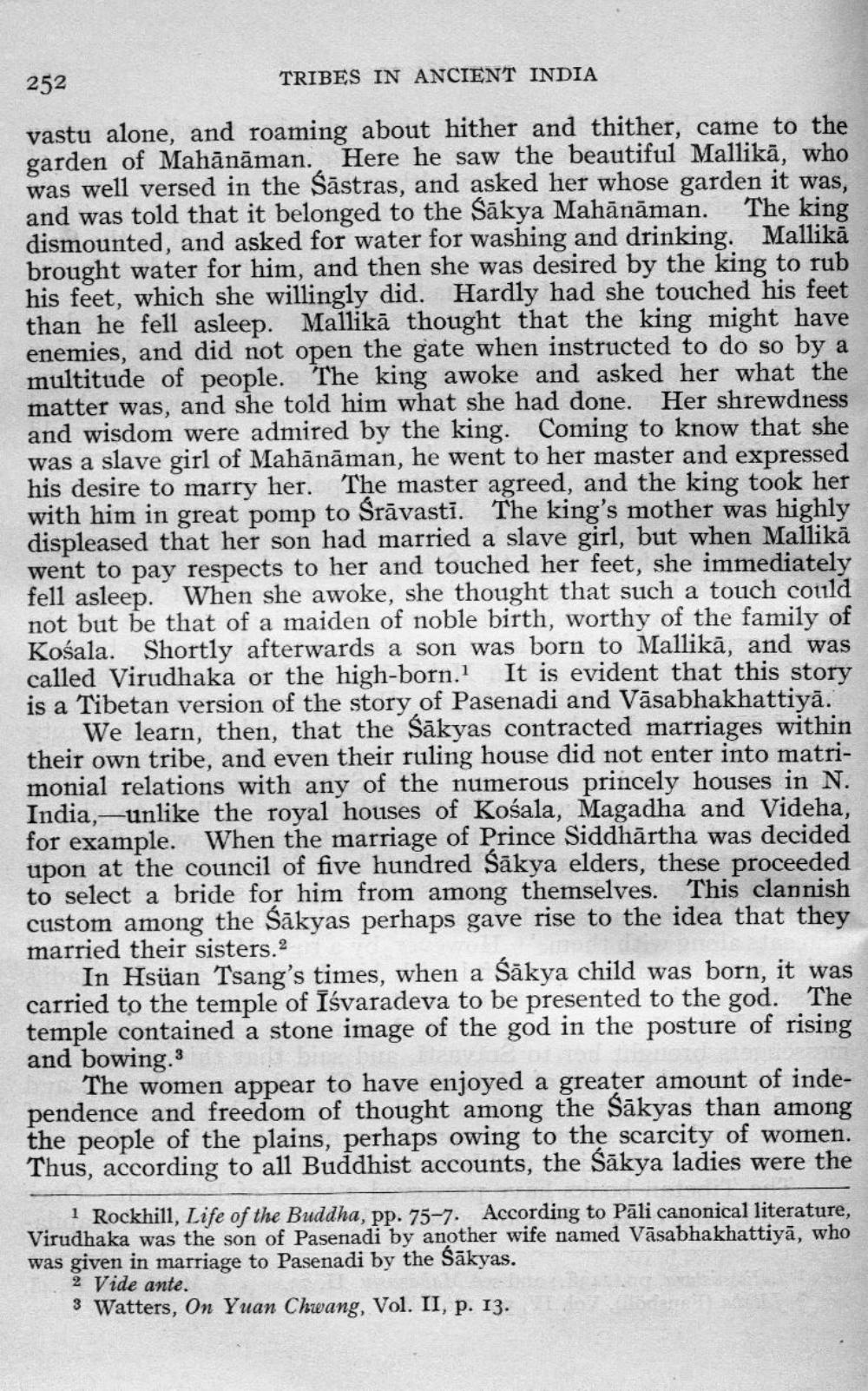________________
252
TRIBES IN ANCIENT INDIA vastu alone, and roaming about hither and thither, came to the garden of Mahānāman. Here he saw the beautiful Mallikā, who was well versed in the Sāstras, and asked her whose garden it was, and was told that it belonged to the Sākya Mahānāman. The king dismounted, and asked for water for washing and drinking. Mallikā brought water for him, and then she was desired by the king to rub his feet, which she willingly did. Hardly had she touched his feet than he fell asleep. Mallikā thought that the king might have enemies, and did not open the gate when instructed to do so by a multitude of people. The king awoke and asked her what the matter was, and she told him what she had done. Her shrewdness and wisdom were admired by the king. Coming to know that she was a slave girl of Mahānāman, he went to her master and expressed his desire to marry her. The master agreed, and the king took her with him in great pomp to Srāvasti. The king's mother was highly displeased that her son had married a slave girl, but when Mallikā went to pay respects to her and touched her feet, she immediately fell asleep. When she awoke, she thought that such a touch could not but be that of a maiden of noble birth, worthy of the family of Košala. Shortly afterwards a son was born to Mallikā, and was called Virudhaka or the high-born. It is evident that this story is a Tibetan version of the story of Pasenadi and Väsabhakhattiyā.
We learn, then, that the Sākyas contracted marriages within their own tribe, and even their ruling house did not enter into matrimonial relations with any of the numerous princel India, unlike the royal houses of Kośala, Magadha and Videha, for example. When the marriage of Prince Siddhārtha was decided upon at the council of five hundred sākya elders, these proceeded to select a bride for him from among themselves. This clannish custom among the Sākyas perhaps gave rise to the idea that they married their sisters.2
In Hsuan Tsang's times, when a Śākya child was born, it was carried to the temple of Isvaradeva to be presented to the god. The temple contained a stone image of the god in the posture of rising and bowing. 3
The women appear to have enjoyed a greater amount of independence and freedom of thought among the Sākyas than among the people of the plains, perhaps owing to the scarcity of women. Thus, according to all Buddhist accounts, the Sākya ladies were the
1 Rockhill, Life of the Buddha, pp. 75-7. According to Pāli canonical literature, Virudhaka was the son of Pasenadi by another wife named Väsabhakhattiyā, who was given in marriage to Pasenadi by the Sākyas.
2 Vide ante. 3 Watters, On Yuan Chwang, Vol. II, p. 13.
ho11
N
.




